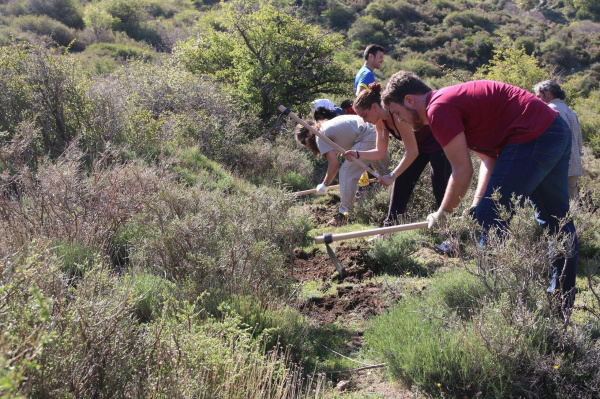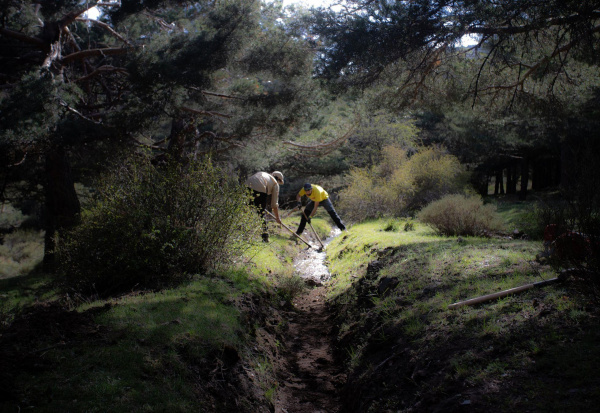Thousands of kilometers of canals dug during the Islamic period in Andalusia were abandoned in the XX century. Spain developed a project aimed at restoring the canals for future use in agriculture.
The University of Granada’s project aims to reuse the water canals built by Muslims of Andalusia.
Spanish archaeologist Jose Maria Chivantos talks about the Aidanamar irrigation canal in Monte-del-Sombrero: ‘There are documents showing that for a thousand years it supplied water to the Albaicín area of Granada, starting in the XI century. The canal was used by artisans going to the Alhambra to build the Nasrid palaces in the XIII and XIV centuries and by the troops of Catholic monarchs who conquered the Nasrid Kingdom in 1492’.
This canal ceased to be used in the 1980s, but thanks to the project launched by the University of Granada, developed by MEMOLab with funding from the Granada Water Foundation and EMASAGRA and Hidralia, it will work again.
‘We will remove the waste accumulated there, connect some sections of the canal and make the water flow to the University of Granada campus to irrigate its gardens,’ Chivantos said.

But the Aidanamar watercourse is only a small part of the vast irrigation system that the Arabs built during their seven centuries of rule over much of the Iberian Peninsula. Canals began to be abandoned from the 1960s since rural Spain became increasingly deserted and the agro-food industry moved towards an intensive farming model using irrigation systems incompatible with conventional methods.
In order to make a difference, in 2014, the University of Granada launched the irrigation canal rehabilitation and cleaning program that began in the city of Cañar, where a small community of about 200 residents started reactivating the system. ‘The University provided resources and volunteer groups, and the irrigation community housed them in a local farmhouse,’ said Caetano Alvarez, the President of the Cañar irrigation community, whose two-hectare garlic and bean farm was one of many that benefited from the restoration of water canals. ‘For a month, students and volunteers cleaned the Barjas irrigation canal. When water flowed down it for the first time in 30 years, we threw a party – a water party that we have repeated every March since’.
The irrigation canal not only provided local residents with water, but also consolidated social ties, as its maintenance requires cooperation of the entire community. In 2015, the Barjas irrigation canal received recognition from the Hispania Nostra association for best practice.

‘Since then, we have been involved in the restoration of 14 abandoned irrigation canals,’ said archaeologist Jose Maria Chivantos, who promotes conventional farming methods combined with the latest technologies.
How did the irrigation system emerge in Andalusia that took Spanish economy to a new level?
In 711 AD, after a dazzling military campaign that ended in the destruction of the Visigothic Kingdom and the conquest of the Iberian Peninsula, the Muslim conquerors replaced their swords and spears with picks and shovels and started digging irrigation canals. With the help of sticks and stones they built dams along rivers, as their ancestors had done in Syria and Arabia. ‘Irrigation and water management were essential for economic development of Al-Andalus,’ Chivantos said. ‘This is the only way to explain the splendor of the Umayyad dynasty and the Caliphate of Cordoba’.
Although the Iberian Peninsula already had very sophisticated irrigation systems, such as Roman aqueducts, the Arabs made irrigation the basis of production. Irrigation canals, drainage systems and dams not only enabled new tropical crops such as citrus fruits, sugarcane, cotton, rice, artichokes and spinach to be adapted to the Mediterranean climate, but also helped to diversify and increase productivity to boost industry and trade in cities such as Almeria and Granada.
‘A bright example is the cultivation of mulberry tree and silkworms that peasants bred, which gave rise to thriving economic activity and export of thread and fabric from enclaves such as Almeria to the whole of the Mediterranean and Europe,’ Chivantos continues. The final expulsion of the Moriscos, former Muslims forced to convert to Christianity, in the XVI and XVII centuries put an end to this economic model.
GSV "Russia - Islamic world"
Photo: elpais.com
